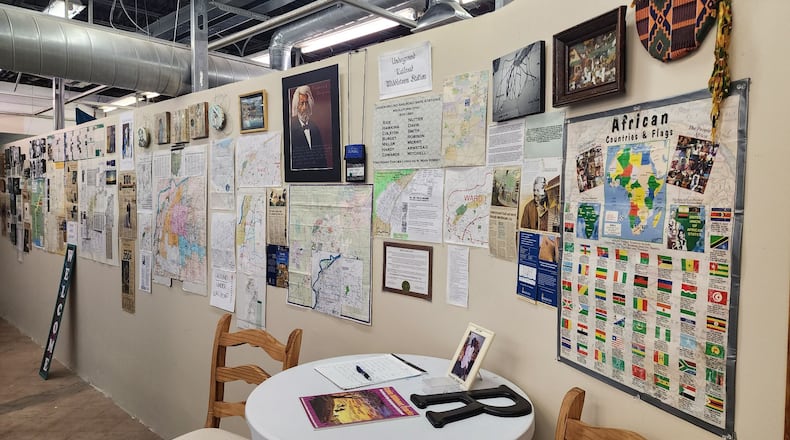Through extensive research, Ahmad has learned that freedom-seekers crossed the Ohio River into the free state of Ohio. Abolitionists and communities along the Great Miami River and Miami-Erie Canal helped them escape by providing food and shelter.
From Middletown, freedom-seekers connected with other underground railroad safe houses west to Oxford, northwest to West Elkton in Preble County and northeast to Springboro.
The public is invited to learn what Ahmad and other area historians and learned during an observance from 5 to 9 p.m. Friday and 11 a.m. to 3 p.m. Saturday. This year’s observance will also include an exhibit from the relatives of the William Still, who wrote “The Underground Railroad” in 1872.
Ahmad, a native of Middletown who played basketball at Wright State University, has assembled a extensive collection of maps, news clipping and photos to tell the story of the city’s contribution to justice and freedom for enslaved people. The display in the basement of the Pendleton on Central Avenue.
“It is in the ‘down under’ at the Pendleton now. It has been up for a couple years,” Ahmad said. Fittingly the arts center now sits at the location of the large house belonging to Dr. Andrew Campbell and his wife, Laura, that was a safe haven to freedom-seekers on their route for freedom.
The Underground Railroad was a planned escape route for enslaved people to Canada, included houses called stations, and those who assisted in their escape were called conductors.
“The knowledge has always been there, we are just trying to make the Pendleton and downtown Middletown a destination where people can come and enjoy themselves and at the same time learn something that they know,” Ahmad said.
Ahmad pointed to historical markers in the city recounting the Underground Railroad’s history, including Douglass Park named for Frederick Douglass, social reformer, abolitionist. Over the years some history has been included in the Canal Museum and in 2012, Sam Ashworth, a Middletown historian, and Ahmad collaborated on a one-hour documentary called, “Long Path to Freedom.”
This week remembrance will include an exhibit from the relatives of the William Still, who wrote “The Underground Railroad” in 1872.
About the Author



